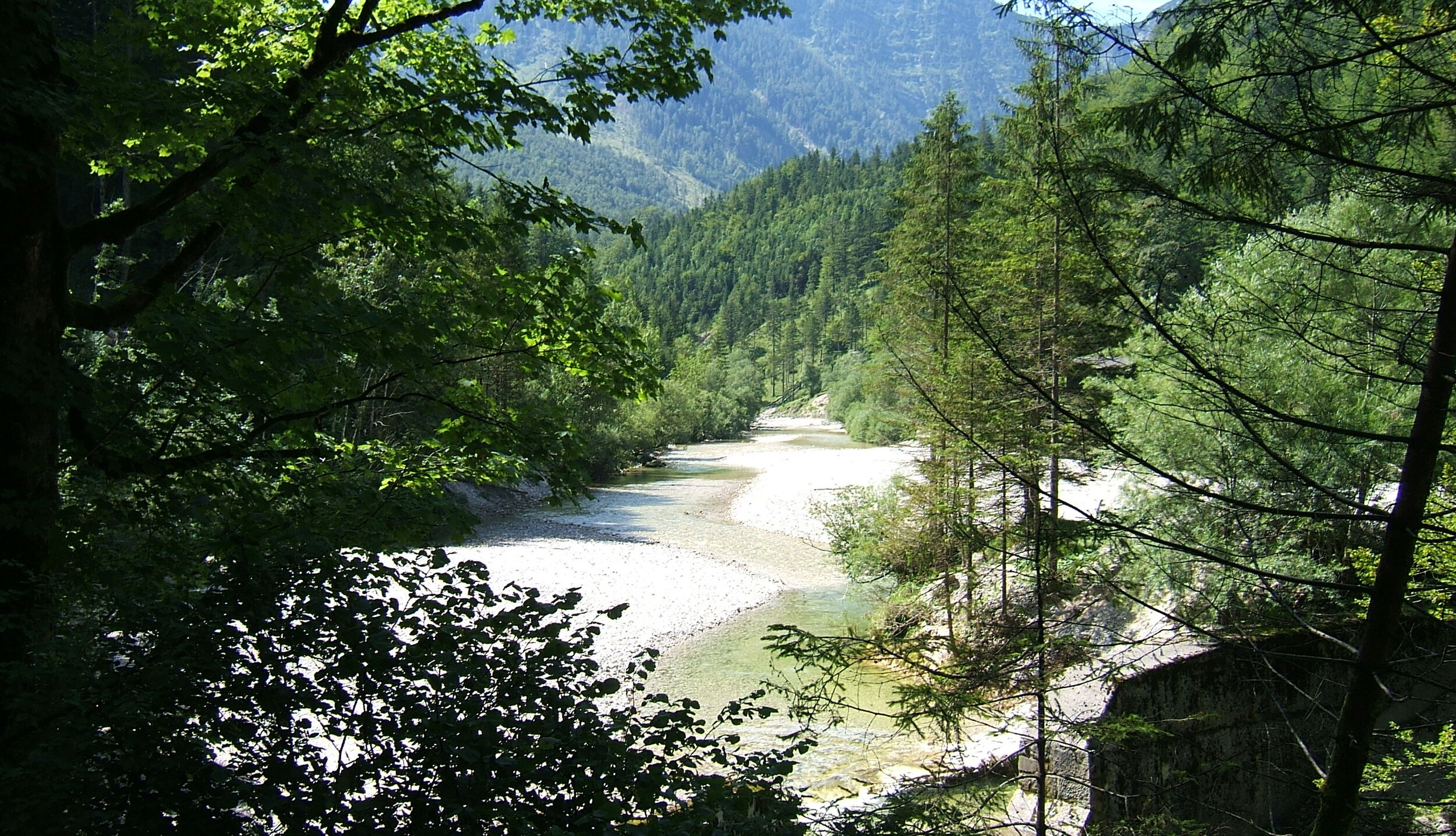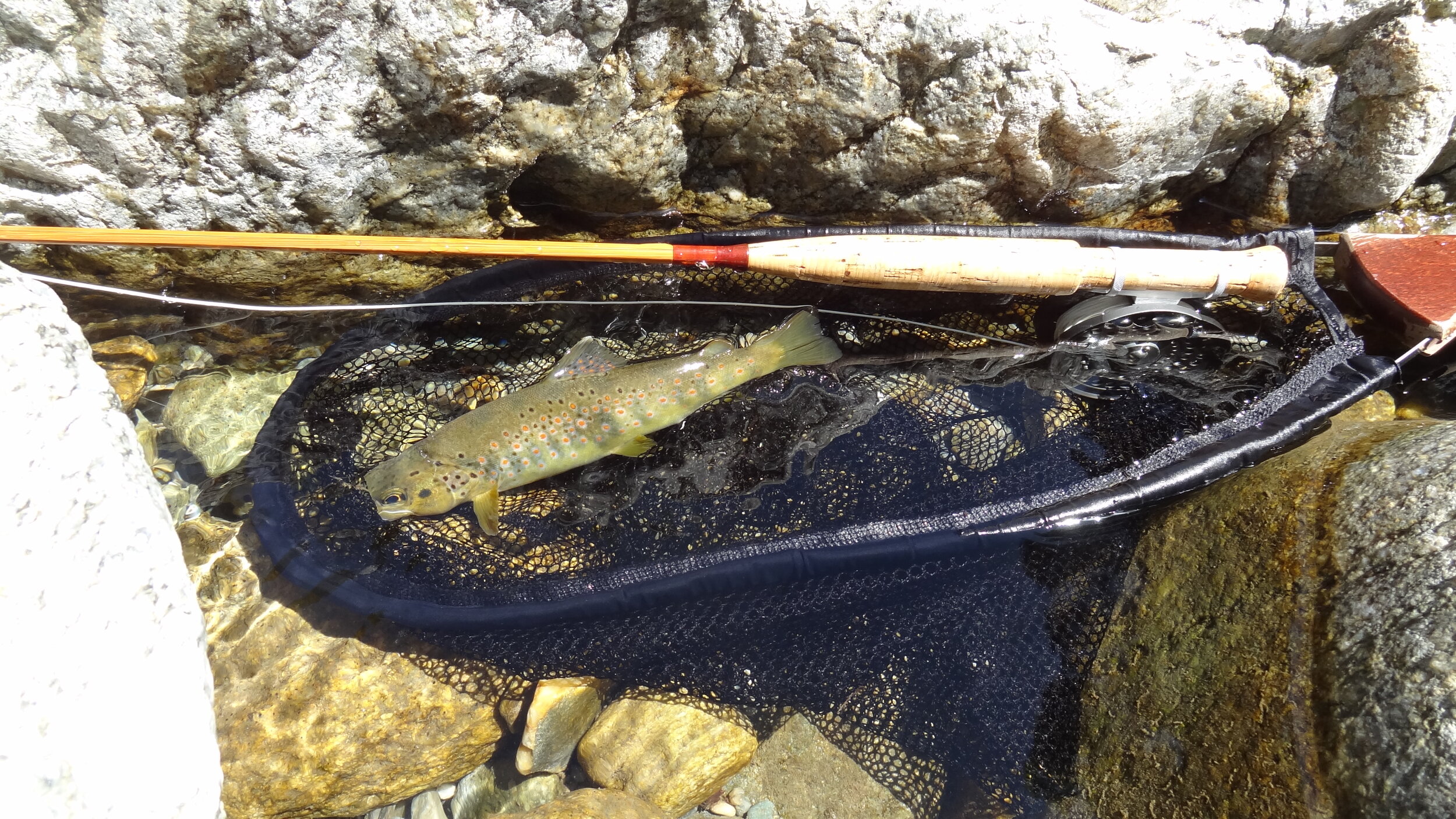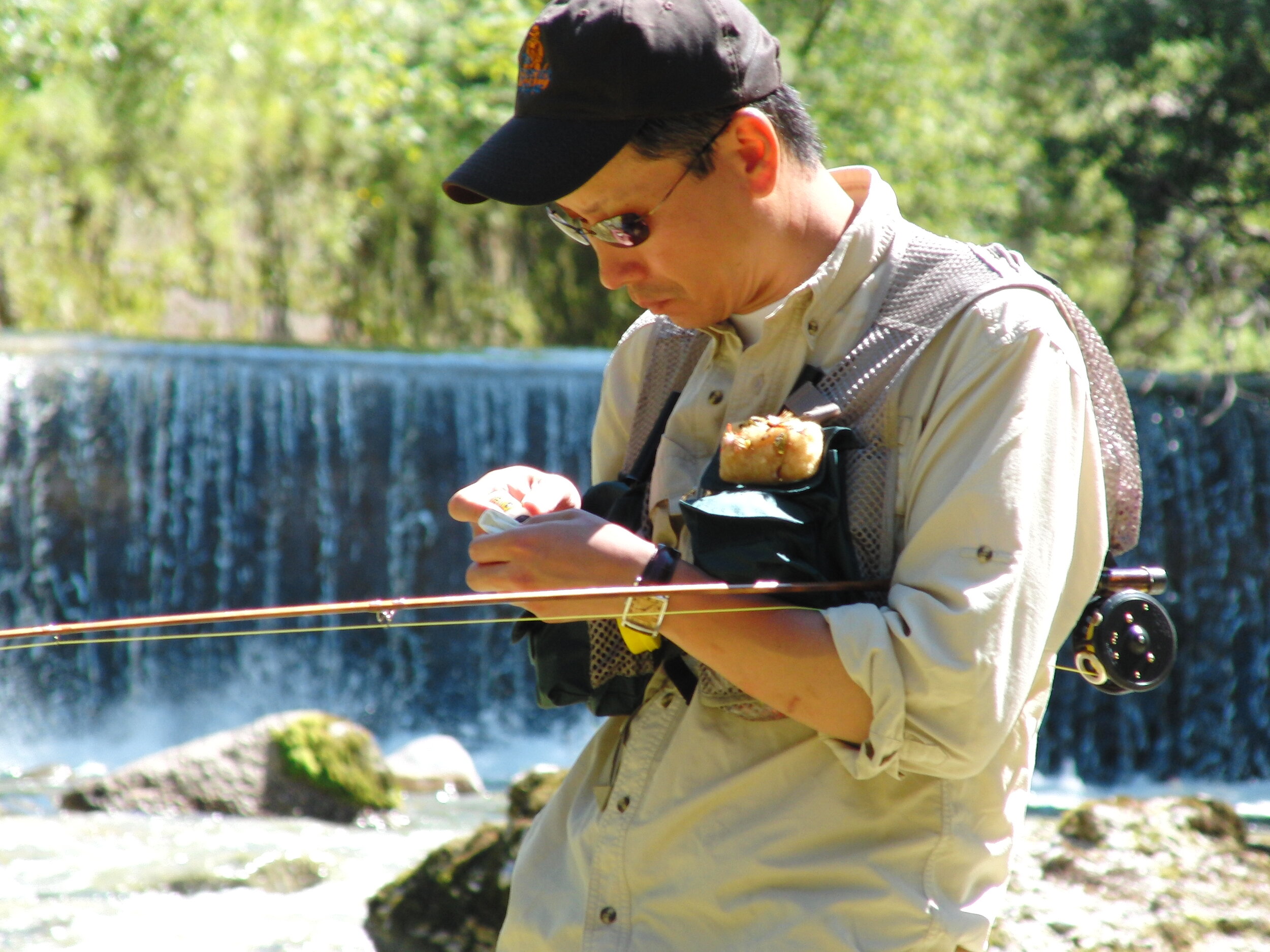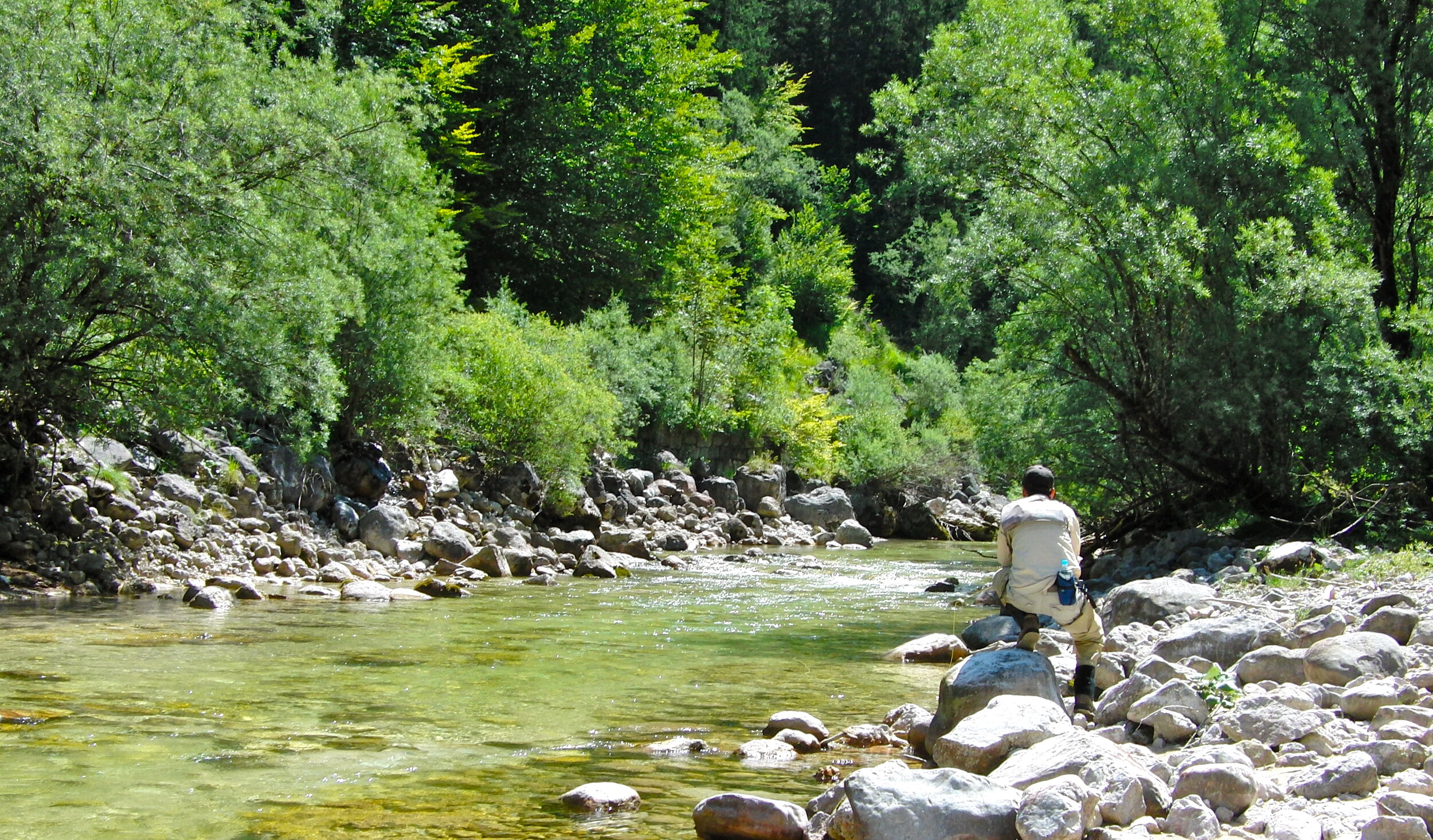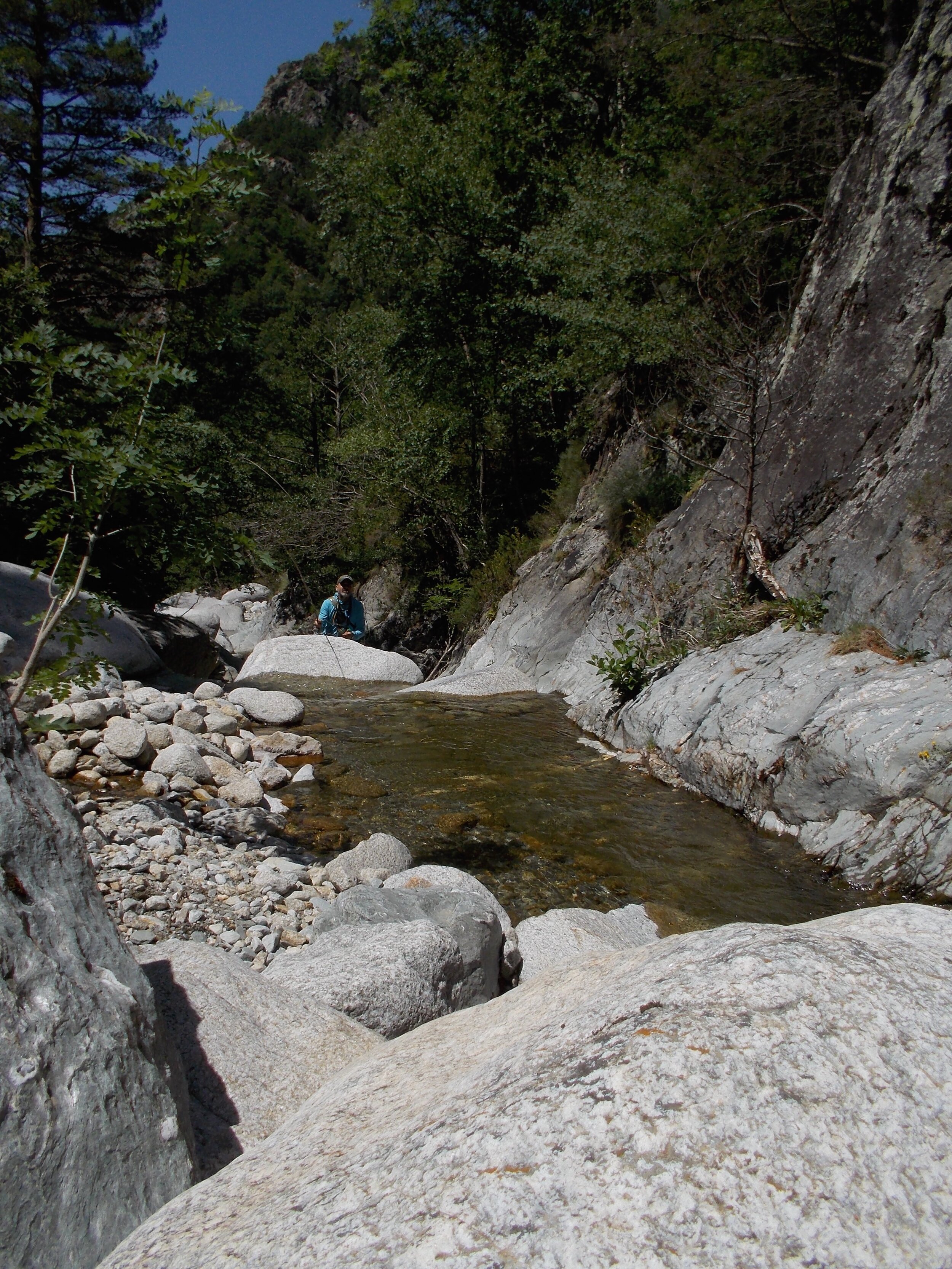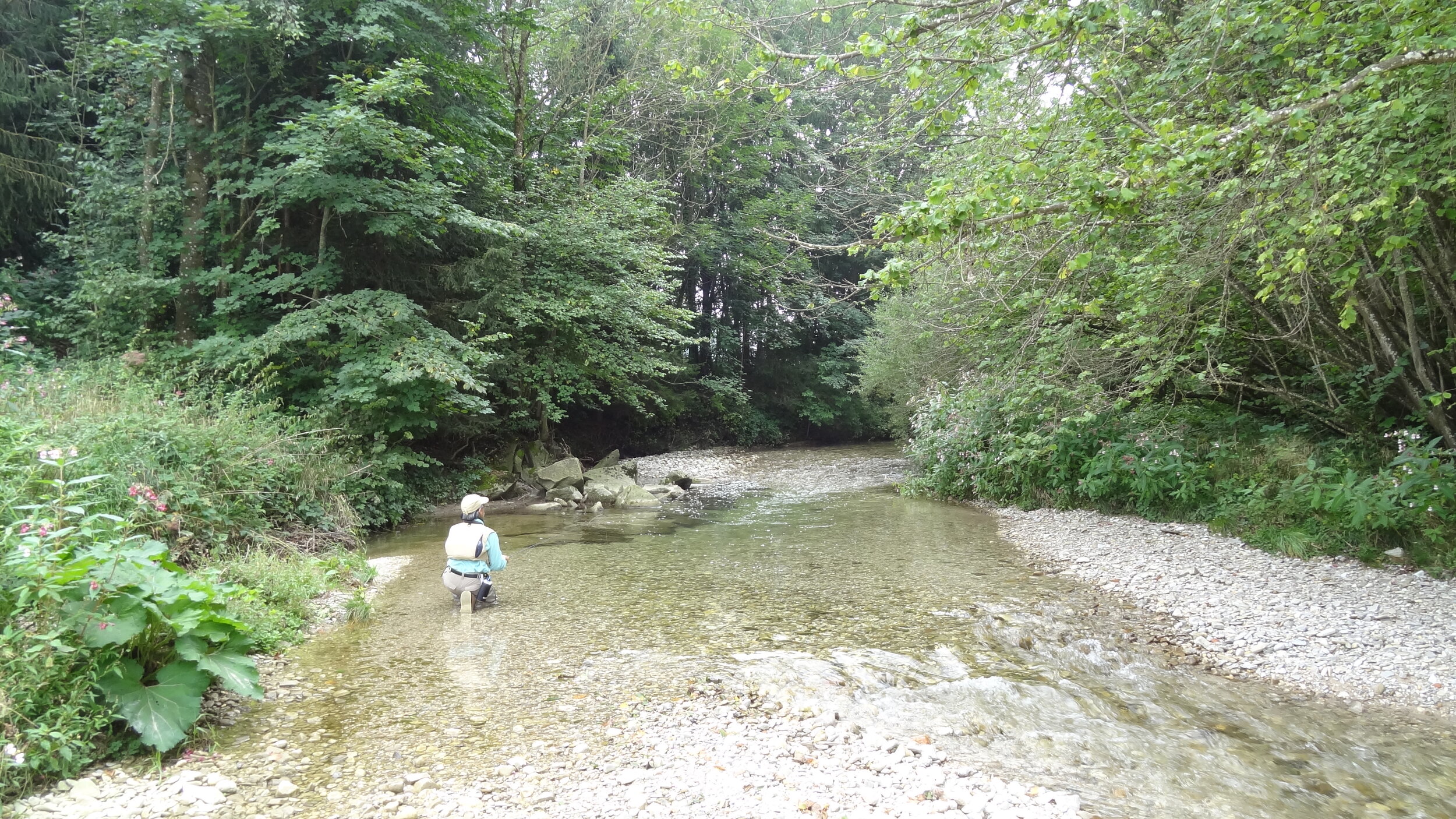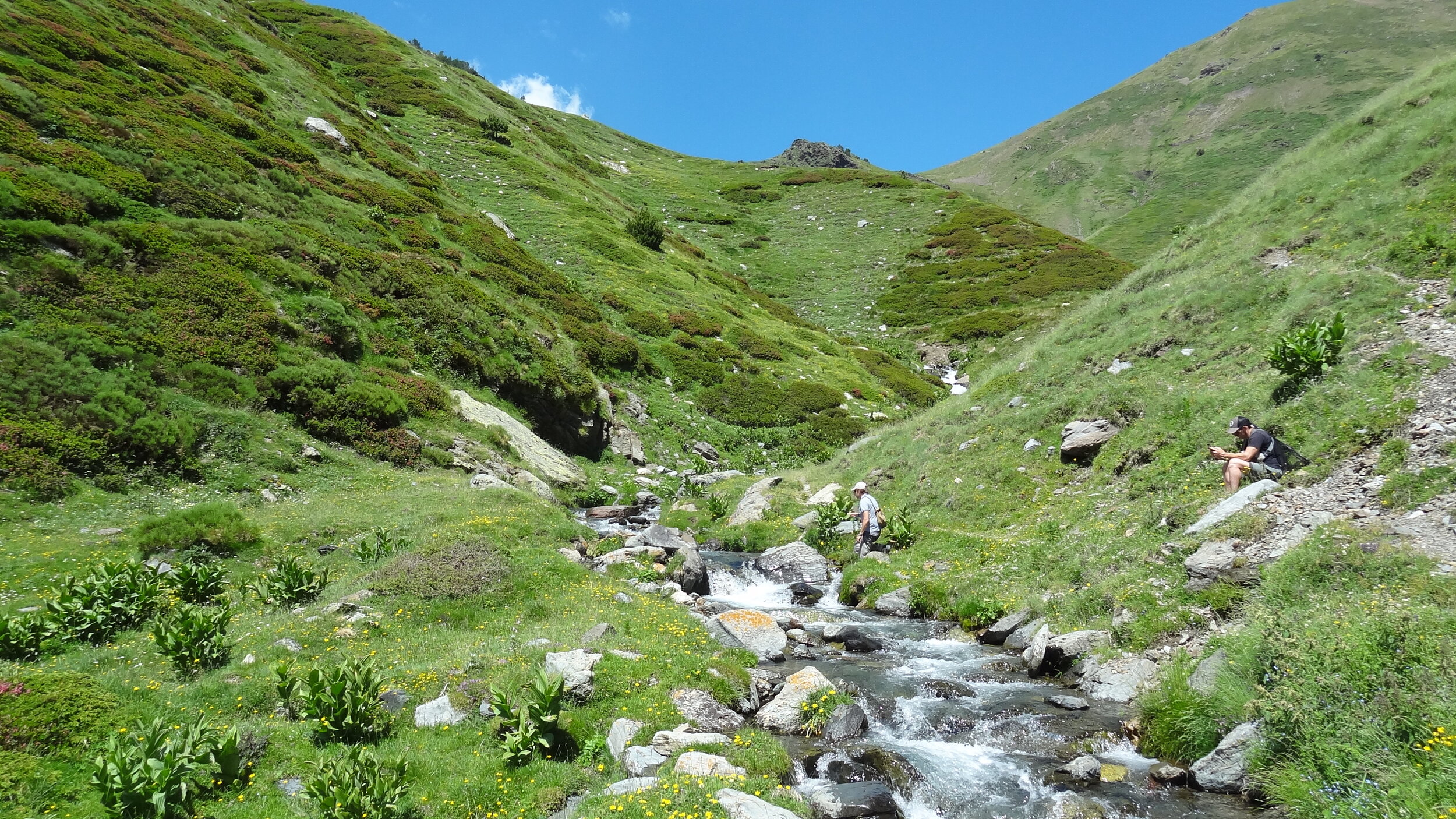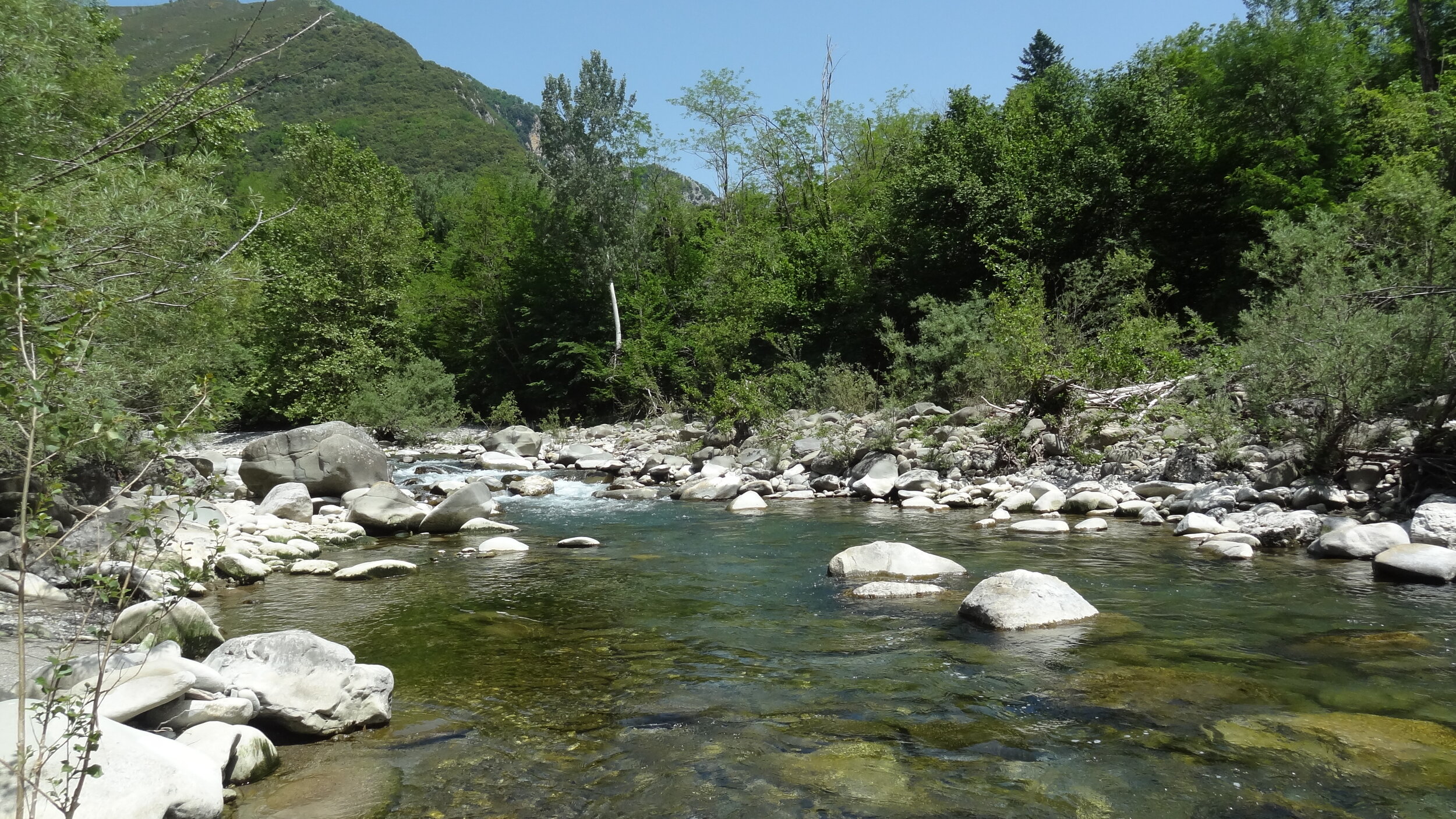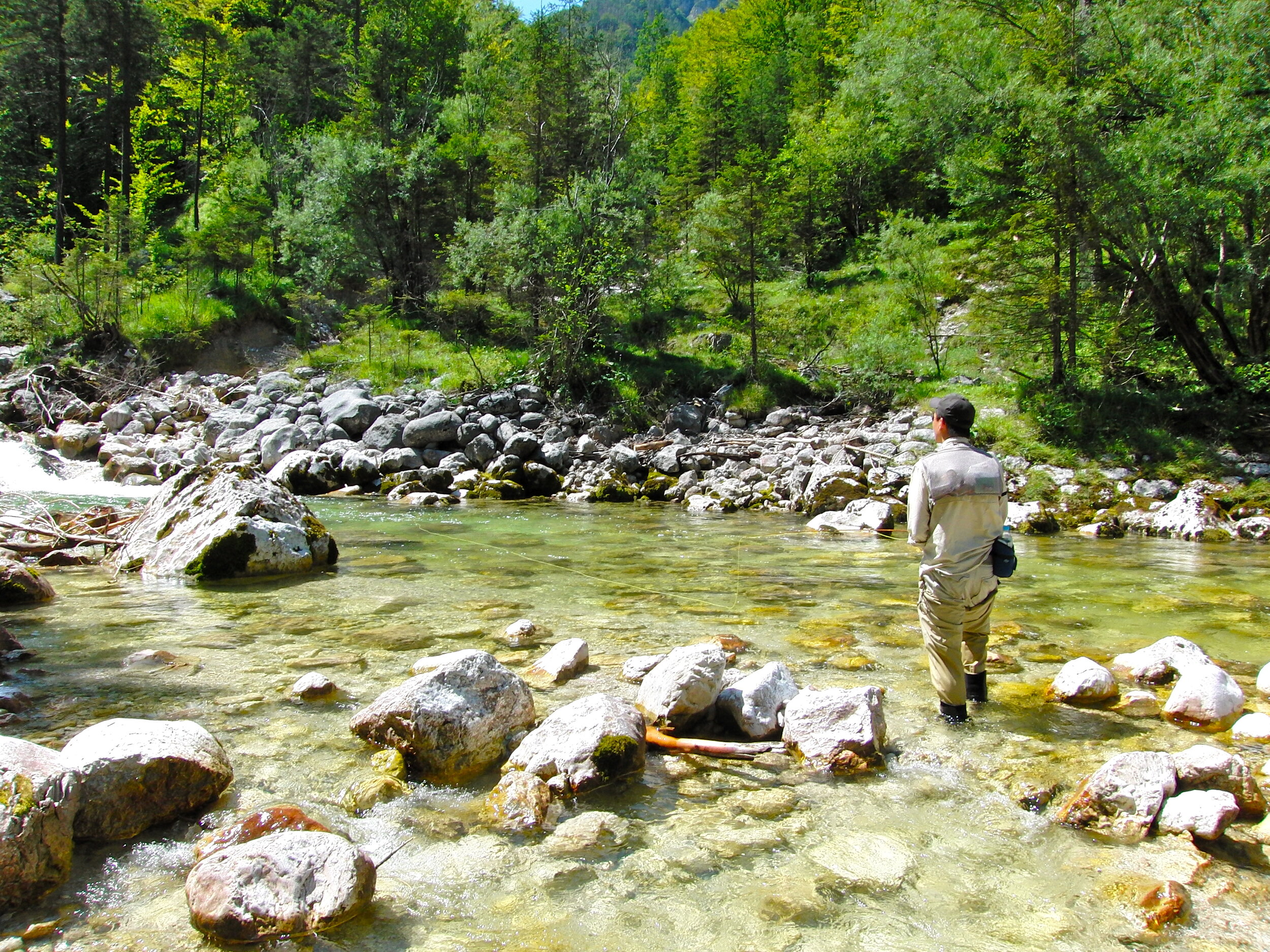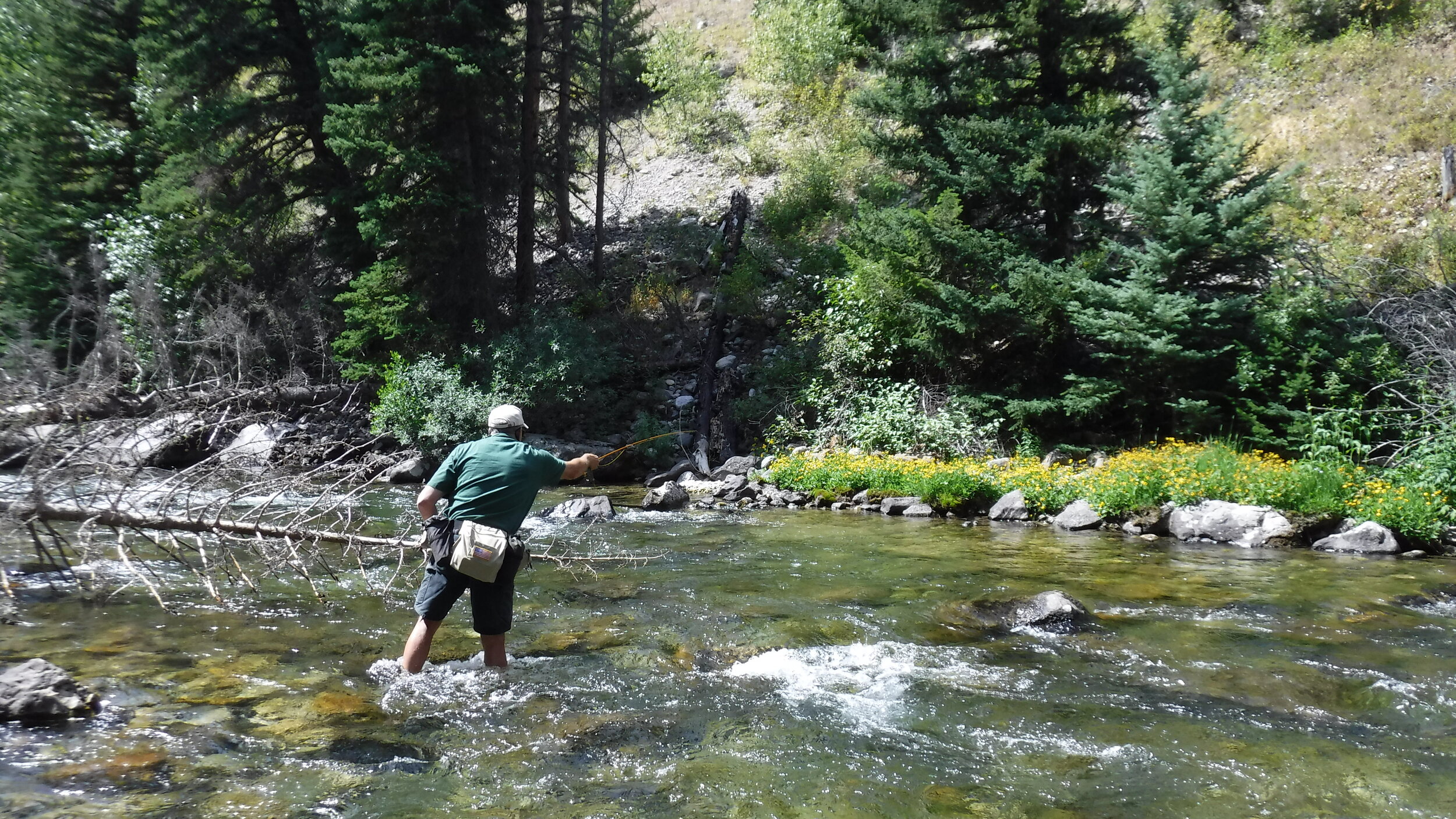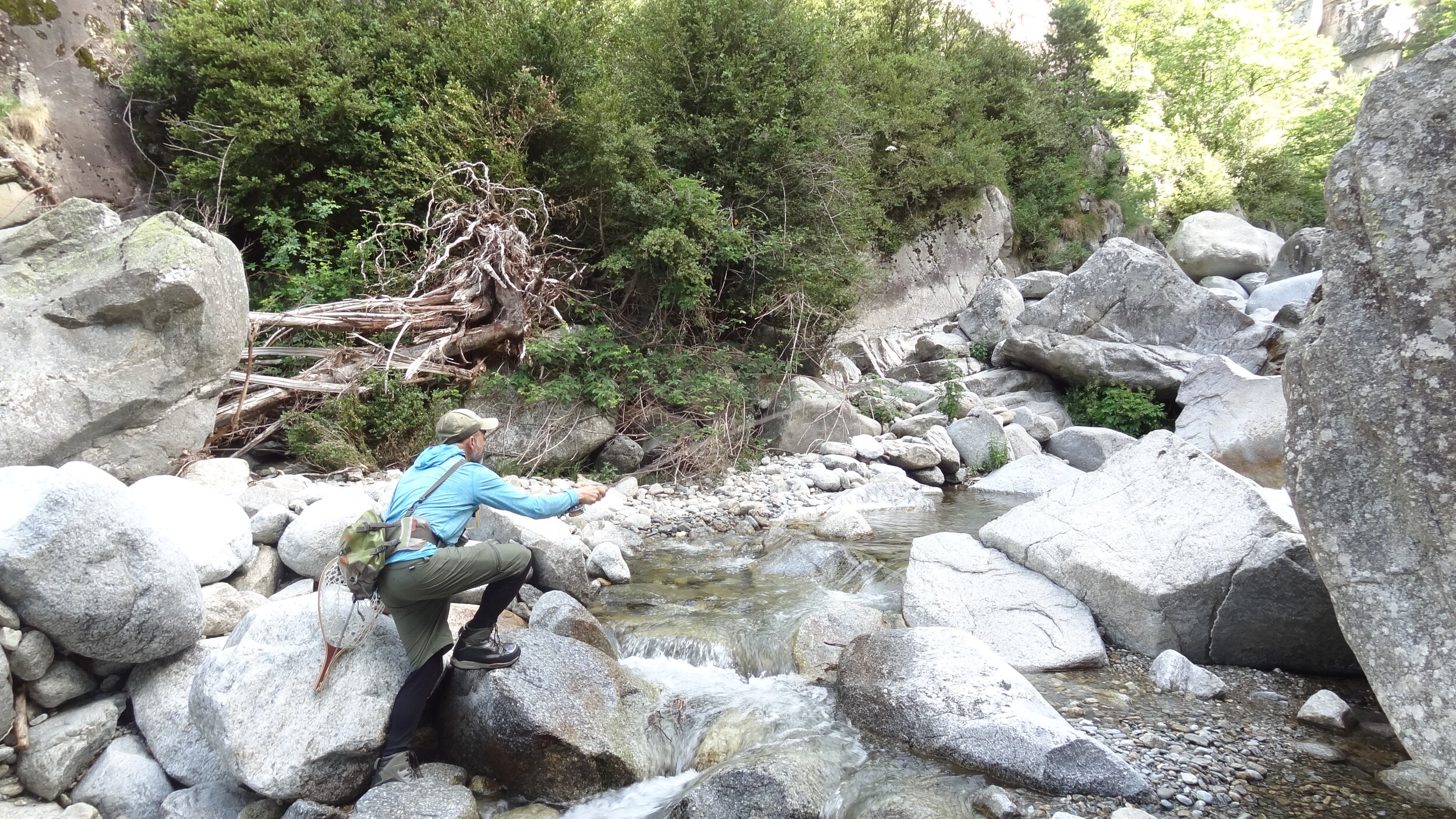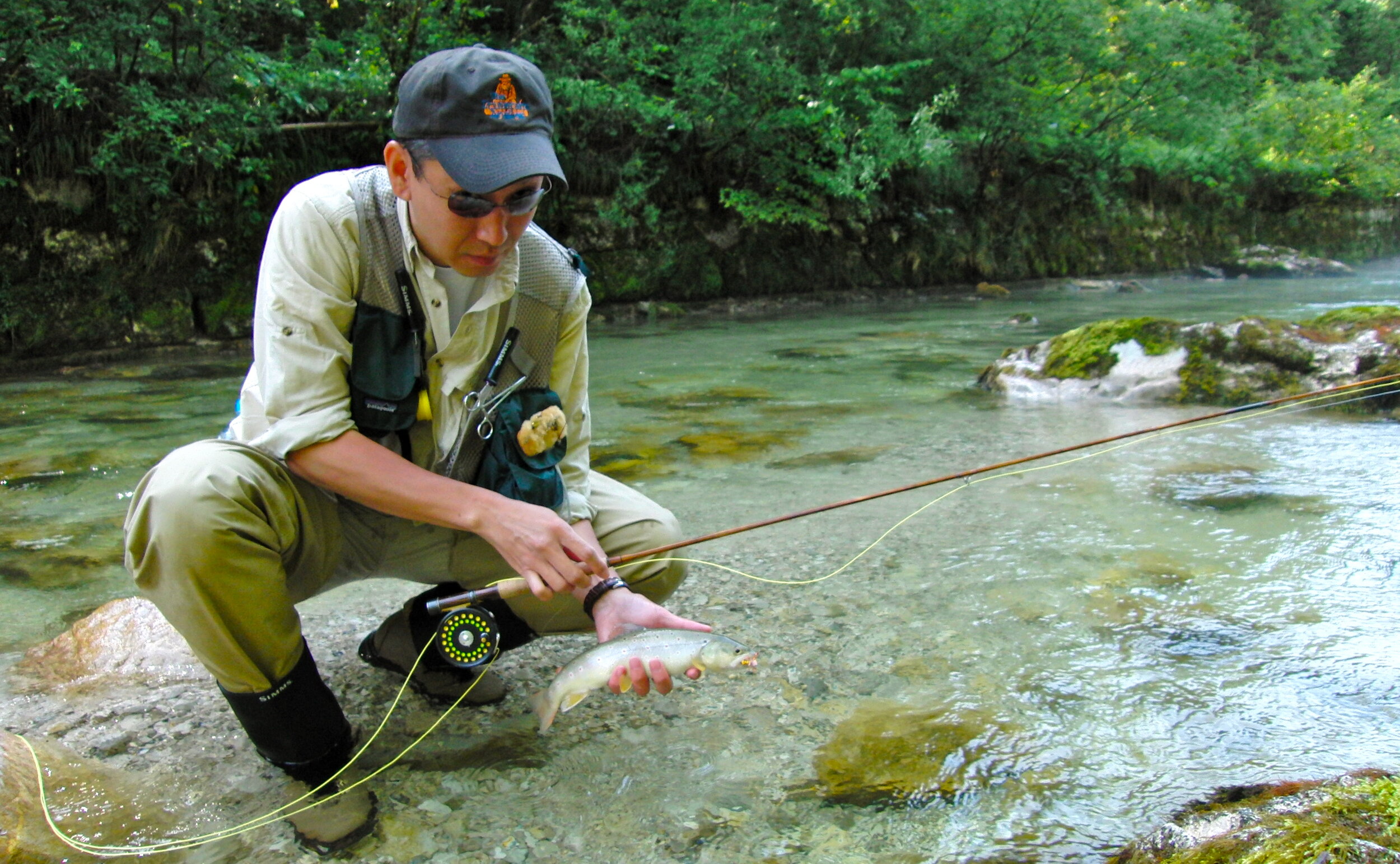
Jay Lee
I’d like to thank Chris for the invitation to this platform. I’m no expert on dry fly fishing (or anything else for that matter), but I do enjoy dry fly fishing small streams. Why small streams? For me it’s the intimate setting where the stream, you and the surrounding fits like a comfortable jacket. Mind you, it’s not a walk in the park. Fish can be weary and conditions can be challenging sometimes. Maybe it’s my way to slow down the pace and enjoy the solitude.
1 Choice of equipment Rods, reels, fly lines, fly floatants, clothes, glasses, and other useful items.
I love fishing small and clear mountain streams. These streams are often surrounded by foliage where long rods can be difficult to manoeuvre. For this type of fishing I prefer a fiberglass or bamboo rod that’s 7 to 8 ft long in a 3 or 4 weight. With a shorter rod I feel I can sneak up closer to the fish. Rods made out of fiberglass and bamboo have a lower modulus (‘resistance to bend under stress’) than (modern) graphite rods. The advantage of these materials allows for casting short casts with great feel and delicacy. And they are tremendously fun as they bend deeply even with a 10 inch fish.
Fishing smaller streams doesn’t require train-stopping drags so I use simple click & pawl reels. I like fly lines that are supple. This allows me to mend the fly line much easier. Colors on fly lines I prefer have earth tone colors like olive or tan. I prefer lines made by SA as they seem to have a more durable coating.
I’m not a great fan of critters trying to eat me as lunch so I always wear long sleeve light weight shirts. I’m not really into camo costumes. As long as it’s not too bright (like red or hot orange) it should be fine. Polarized sunglasses are a must to see through the reflections of the water. Amber or pink colored glasses seems to give me the most contrast.
A final note on wading. As streams are rarely deeper than waist deep I prefer wearing breathable hippers than chest waders. Especially during the summer heat these hippers are a godsend.
2. Leader material, build-up, length and knots.
Since we are fishing very close to the fish (often just two or three rod lengths away from the fish), I like to keep my leader simple. As we regularly get hang ups in foliage or change flies I tend to use a lot of tippet. I start with a 7.5ft leader and replace the original tippet section with a longer tippet of about 3 to 5 ft. Usually 5 to 7X.
I’ve yet to try those new tippet rings, but I’ve using a similar method by cutting off the tippet section of the original leader and tying a minute perfection loop on my ‘dismantled’ leader. This way I can change tippet without shortening my leader. I tie my flies using a loop knot as it seems to give the fly more movement.
3. Approach and stealth.
Small streams offer the angler to get close and intimate. For me this means stalking to the fish as close as possible, sometimes less than two rod lengths. Slow moving is maybe the most effective way to keep your presence to a minimum. Just wait a minute before making your cast to let the surrounding go back to relax mode. I know, it’s not easy when your quarry is in sight!
Depending on the progress of the season, the water levels can be low. When the water is low, fish will concentrate around a pool or swift run. Any sizeable spot can host more than one fish. The strategy can be catch as many fish as possible or the largest fish. I like to rotate the strategy. For smaller spots it’s a one chance shot. As usual a chosen strategy sometimes won’t work out as planned. That’s part of the game!
Especially if a spot looks really sweet, I’ll try to look if I can see the ‘boss’. On these small streams, the right presentation is to deliver the fly not too far from the fish. Besides the ever presence drag, delivering the fly too far from the target fish there’s the risk more opportunistic ‘wingmen’ move ahead. Generally a foot in front of the hot spot is just about right.
4. Reading the water.
Small streams come in many variations but basically there are three types: fast pocket water with large rocks & boulders, a more cobble bottomed and slower water and small spring creeks.
The pocket water streams have rocky bottoms with boulders scattered all over the place. This type of water can be challenging due to the speed of the water as well as manoeuvring through the stream. As the name implies this type of water comes with pockets behind and between rocks and boulders where trout will hold. These pockets are basically mini pools where the fish have the ease of safety under a boulder and where water slows down a bit. Don’t forget to look in front of a boulder as the boulder cushions the current offering a softer spot where fish can hold. Basically even under a small rock is enough to hold a fish.
The streams with a more cobbly bottom are my favourite small streams. The current is often less turbulent and the due to the structure of the bottom the stream offers different faces. These variations are returning basic structures: riffle, run and pool. Riffles are the choppy stretches often scattered with rocks and boulders. These highly oxygenated areas are ideal hiding spots for fish during warmer conditions. The rocks and boulders are also an ideal habitat for insects. This is the food factory.
Runs are where the current due to the increased depth slows down. Bottom usually has more even structure. Hiding spots are usually along the banks and obstructions like logs. Runs are typical stretches where fish congregate when a hatch occurs.
Pools are the deepest sections of a stream. If a fish feels threatened pools are the spots where they will retreat. During warmer periods when the water level is low, fish tend to hold in these deeper and cooler parts of the stream. Pools usually host the largest fish as it offers safety, cooler temperature and easy feeding.
Spring creeks are different as the source of the water provides a continuous supply of cold and mineral rich water. Spring creeks are generally slower moving, sometimes almost glass like surface, with rich water vegetation. Fish tend to cruise around like in a lake. Due to the abundance available food, fish in spring creeks are often much pickier. The slow-moving water and shabby presentations don’t go well.
5. Casting ability which casts are essential.
Small streams don’t require long casts. Generally, casts will be within 5 to 20 ft, sometimes even shorter. Often fish will hold in the smallest of spots covered by brushes. In this case a bow-and-arrow cast is the only way to deliver the fly. A rod with a delicate action will load well when we need to make such short casts.
On swift pocket waters drifts are short. Keeping the line off the water, and sometimes just a last few feet of your tippet, is necessary to keep drag away. If possible, stay out of the water to prevent wading waves and crunching cobbles that might alert the fish.
6. Entomology, what should we know.
Small streams, especially the ones on higher elevation, have a short summer season. Fish in these streams know this and aren’t too selective as long as it fills their tummy. In most small streams various types of caddis are the predominant aquatic insects. Smaller stoneflies like the yellow sally also inhabit the well oxygenated rocky stretches. In slower streams we will also see various types of mayflies. In spring creeks scuds can be a big part of the fish’s diet. During the summer months terrestrials like beetles and hoppers are a welcome snack.
7. Rise forms Can they tell us something?
Subtle rising is most often found on spring creeks. In most cases fish in small streams won’t let a nice meal drift pass them. On gin clear streams, we can see the fish come up for the fly. Just take a moment before raising the rod. However rises to terrestrials, especially hoppers, can be quite explosive.
8. Fly selection, Size, shape, materials, which flies are essential.
I try to keep my fly selection pretty simple. Not only from a practically point of view (I like to travel light) but also to make fishing easier. As mentioned earlier small stream fish are rarely selective. Depending on the speed of the water I choose for a more delicate looking fly for the slower part and a more buoyant fly for faster moving sections. Fly size is something I tried to look at a more scientific way like water temperature, time of the year etc. but at the end I just pick a fly I can see on the water. For the fish I guess everything that comes along is a snack that it can’t risk missing out with seasons being so short.
Fishing with terrestrials is what I especially enjoy. Maybe it’s the enthusiasm of the take or maybe it’s because they are just plain fun to cast to impossible spots like under that log, between two boulders or against that grassy bank. I just imagine that the fish know a beetle or a hopper can be clumsy and more than often land on the water becoming a nutritious meal. A buoyant fly like a hopper is also an excellent way to fish with a tiny ant or a nymph as a trailer.
9. Presentation and drifts.
I love casting but when I’m fishing, I want to keep my casting simple and effective. For most of my presentation I try to position myself so I can deliver my fly at an angle, either up or downstream. Drifts on a small stream are generally no longer than 2-4 feet, so we rarely need many mends. The reach cast (an arial mend) is probably the most effective way to keep the drift as natural as possible with minimal water disturbance of a mend.
10. Upstream or downstream?
Direction of approach on a small stream is probably more dictated by the setting of the obstructions (boulders, trees, etc.) than to get the most natural drift. Drifts are generally short so I just look for the easiest way to get my fly to the fish.
11. Fighting fish.
Fishing a small(er) stream means we need to adjust our expectations. Everything is downsized. Fishing the typical 9ft #5 rod is no fun. Go grab that (ultra) light rod and enjoy the limitations. Both the length and line weight that matches the quarry results in a lot more fun. A 12 inch brown trout could be a monster in a small stream. We’re not expecting to break the personal best on a small stream. It’s the solitude and the intimacy of the stream that embraces us. Isn’t that why we fish after all?
